12 Sep 2019
Interview
ELIZAVETA KONOVALOVA: GEOGRAPHICAL DISPLACEMENT AND ADAPTATION
Elizaveta Konolova is a visual artist from Russia and France. She is staying at HIAP’s Suomenlinna studios during autumn 2019. Her current work involves mapping the territory geographically and researching connections between Suomenlinna and Kronstad, located in the Gulf of Finland, 30 km from Saint Petersburg.
AA: How do your knowledge and studies shape your work? You work in a variety of mediums, including film, installations, site-specific interventions and publications.
EK: I am constantly readjusting my practice. My work is driven by projects that are often related to geographical displacement, and specific places. This may be the main reason why I use different mediums – I adapt.
The choice of a medium does not primarily depend on what I know how. Sometimes I need to learn a new skill, or find a DIY solution, it also happens to me to delegate a specific task to a professional. The range of what I may need is waste – playing tuba, transforming a car garage into a camera… I find this practical unpredictableness quite amusing. And stimulating as well, because it pushes to reinvent the practice from time to time.
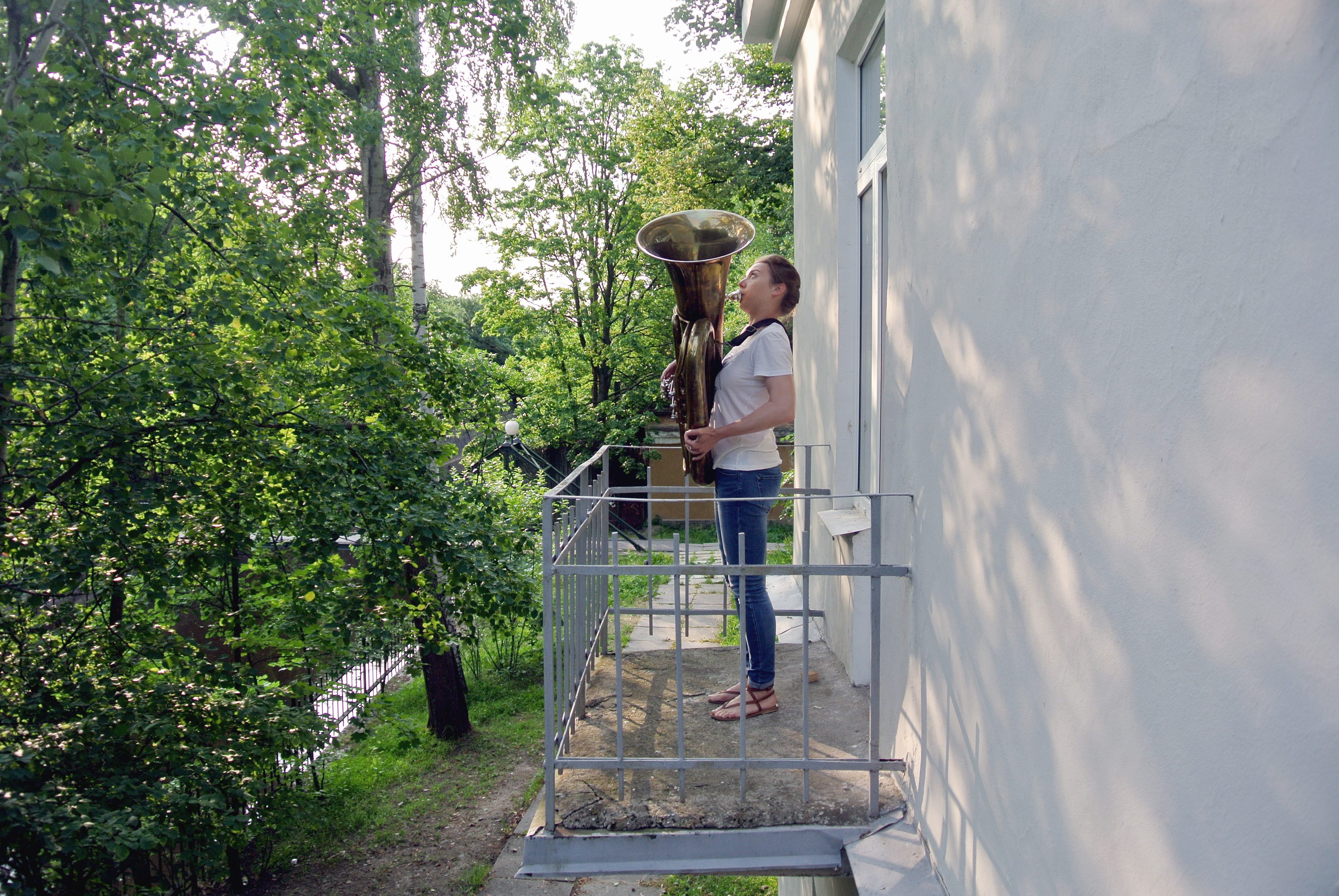
The Whistle, 2013. Performance ; video documentation, written story. Project accomplished during one month residency of the National center for contemporary art in Kronstadt, Russia.
Preliminary research helps me to understand the context and put together a story, a singular narrative that often becomes a starting point of making something. I have recently completed a PhD in visual arts, within the interdisciplinary program SACRe in Paris, France. The project focused on a study of a particular territory, Kaliningrad, that used to be part of Germany and was annexed by the USSR after WWII. It was a four-year research, which I conducted for the most part together with an art historian Andrei Erofeev. At the end I presented a publication and an exhibition, united with a same title, K.
This period was truly formative. I would not call it studies, but it was indeed about experimenting and learning – balancing between nearly scientific methods of collecting data and producing images. Forms were emerging by montage of various documentary materials, progressively, catching up with the outcome of the fieldwork that was absolutely absorbing.
AA: Could you tell me a bit about how you think about scale in your work, and how you move between paper-based or sculptural works?
EK: In some recent works scale has become a conceptual question. For example in Soot series I chose to keep the scale 1:1 to emphasize the documentary dimension of the images (Soot, 2014 – on-going). This series consists in photo fixations of found graphical compositions, produced by ashes of cigarettes, regularly stubbed out against walls in public spaces. The photographs are printed on blue back paper, and displayed on the walls according to the original distance of the photographed fragment from the ground. I tend to use photography as photocopy, duplicating the surfaces in a way, although the relation of the images to the human body and its movement in space is quite important, this might be the link between two- and three-dimensional works.
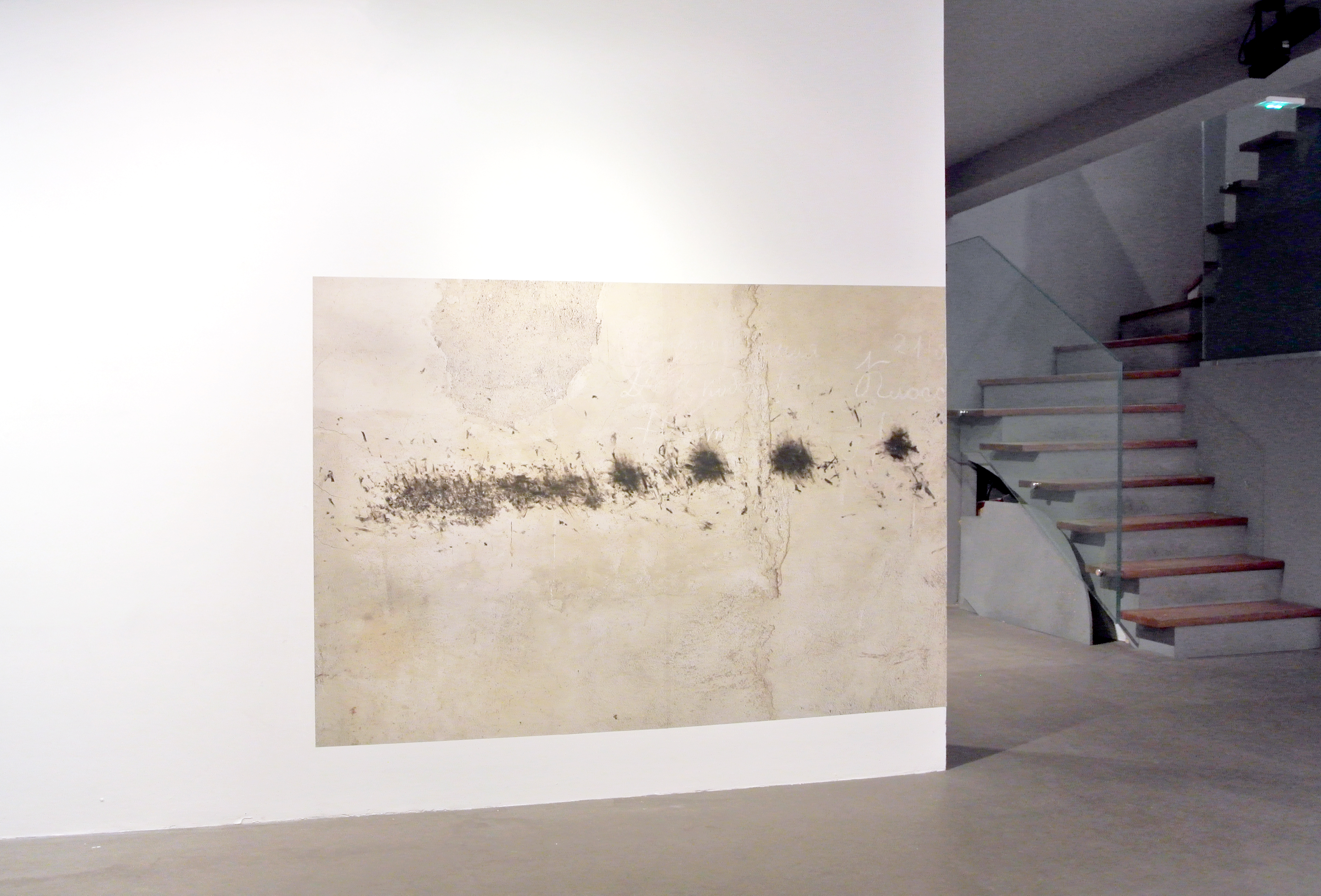
Soot, 2014. Ongoing photo documentation of found graphical compositions, produced by ashes of cigarettes, regularly stubbed out against walls in public spaces. Ink-jet print on blue back paper in scale 1:1, wallpaper glue.
I like very much the definition of analogue photography that I saw ones in one of Harun Farocki’s texts – «distanced imprint». It combines the potential of producing an image and the quality of direct, material proof of something happening in front of the camera. I guess I am still sensitive to this everlasting idea of rendering reality.
The scale of sculptural works is less connected with external realities, but rather balanced with proportions of the exhibition space itself and human scale. Paper-based and sculptural works can also be varieties of one same thing, designed for different circumstances of viewing. This is what happened with my PhD, K– I chose to present the outcome of the research in two forms: a publication, consisting in a set of books, and an exhibition.
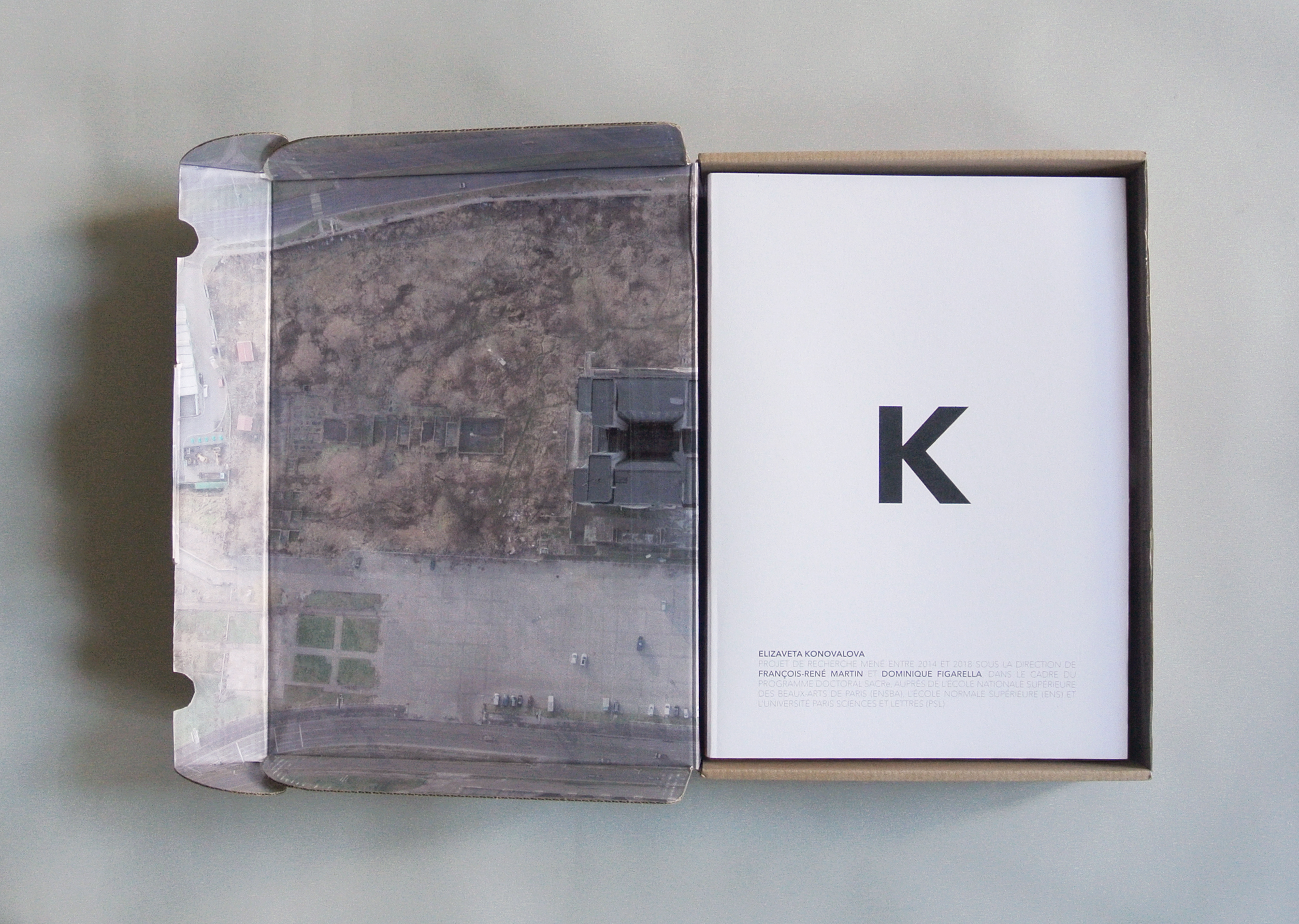
K, 2018. Documentation of the PhD defence exhibition, installation details.
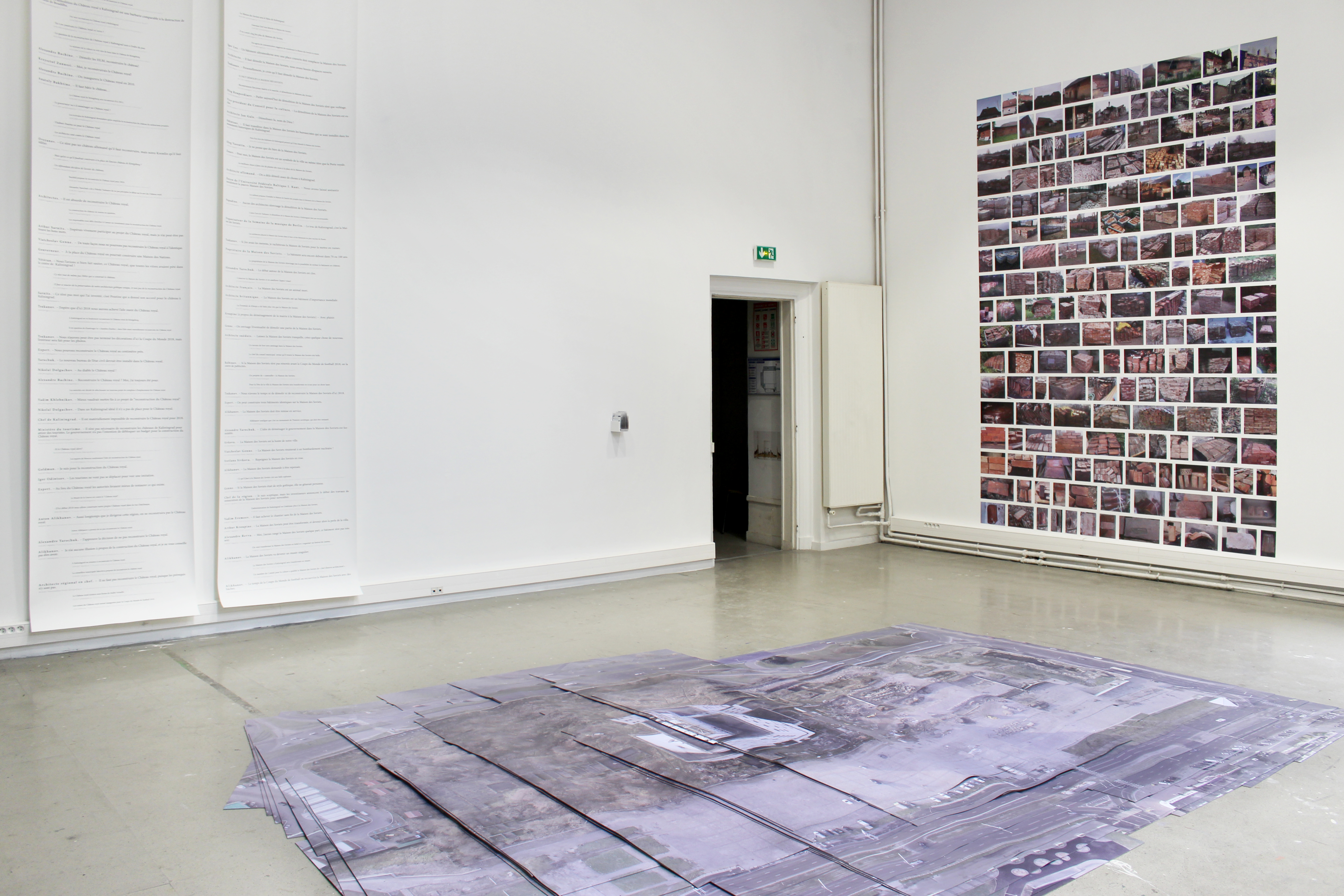
K, 2018. Documentation of the PhD defence exhibition, installation details.
AA: How does location and travelling affect your work? You are currently on a journey, and you have produced work in several remote residencies.
EK: My works are often related to the study of a particular territory. Looking backwards, I think this direction appeared in my practice due to my own geographical migrations and contextual work in residencies. The type of artistic practice, provoked by the residency format itself, is very productive for me. Temporary escape from usual environment sharpens observation and opens new grounds for reflection; offers time, free from routine and side work, that can be fully focused on creative process. For me each residency is a strong leap forward, and even in the intervals the material accumulated during residencies continues to fuel my practice.
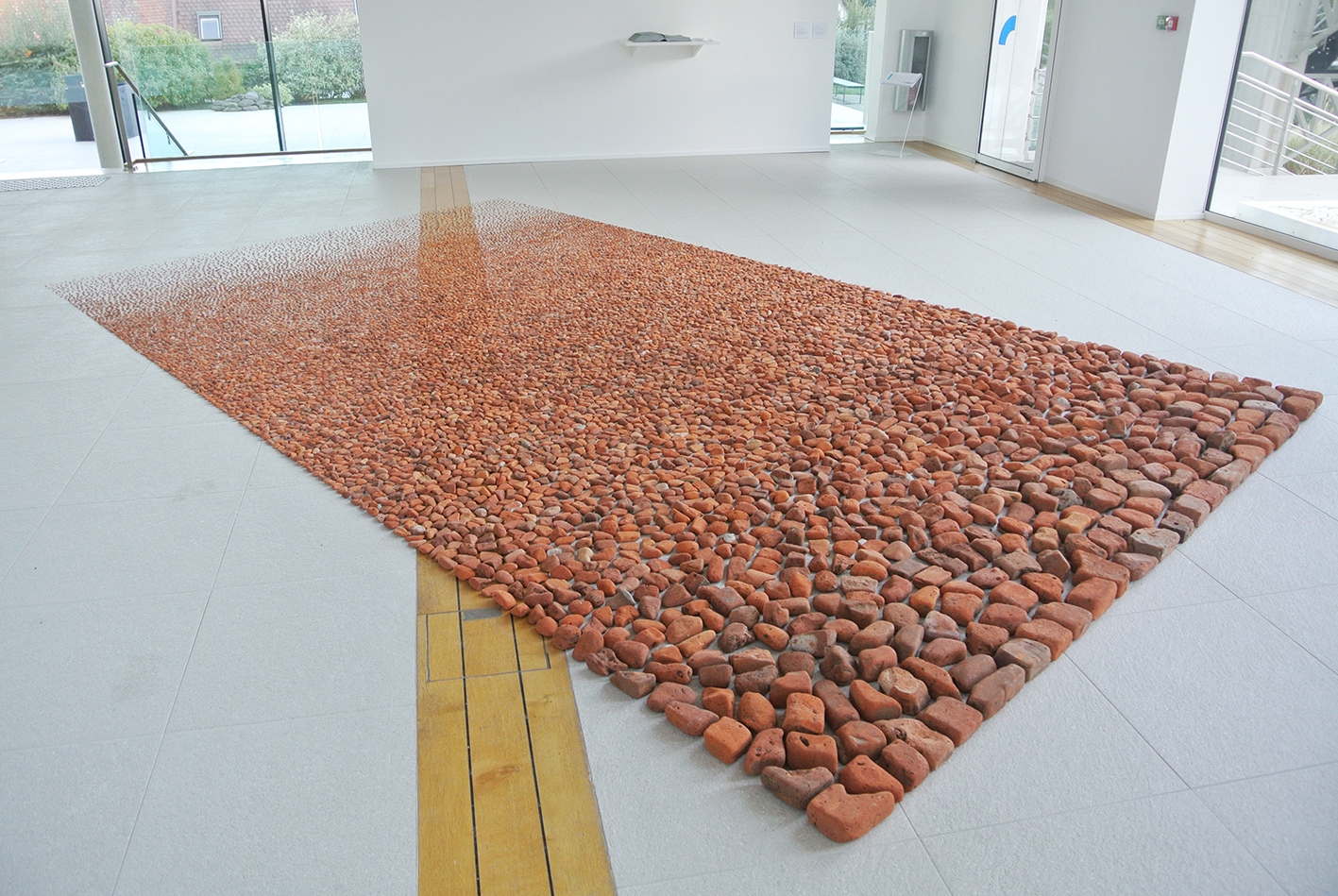
Altstadt, 2014. Vestiges of red bricks, left afer distroyed costal houses in 1944, collected on the shores of the Elbe river, Hamburg, Germany. Project accomplished during the residency at Frise Künstlerhaus.
AA: Was there anything in your background which would have indicated an interest in geography and landscapes?
EK: Probably living between two countries since teen age accustomed me to travel. I also come from a family where traveling between countries was relatively usual (witch was absolutely exceptional in Soviet Union).
Nothing special otherwise.
AA: Your work involves a lot of research. What outcomes do you hope to reach by the field and documentary research you will undertake in Suomenlinna?
EK: I am just in the beginning of my three-month stay, so it is difficult to foresee the result. There is one direction that I started to explore, without a precise idea of where it is going to lead – tracing connections between Suomenlinna and Kronstadt, that has similar military background as a fortress, located in the Gulf of Finland, 30 km from Saint Petersburg. Historically these two points were placed on the map as opponents, although they were very much alike, like figures in a chess game, of same kind but different color. I am interested in different scenarios that Suomenlinna and Kronstadt followed after their primer function – protecting the capital – was abolished : museification, abandonment.
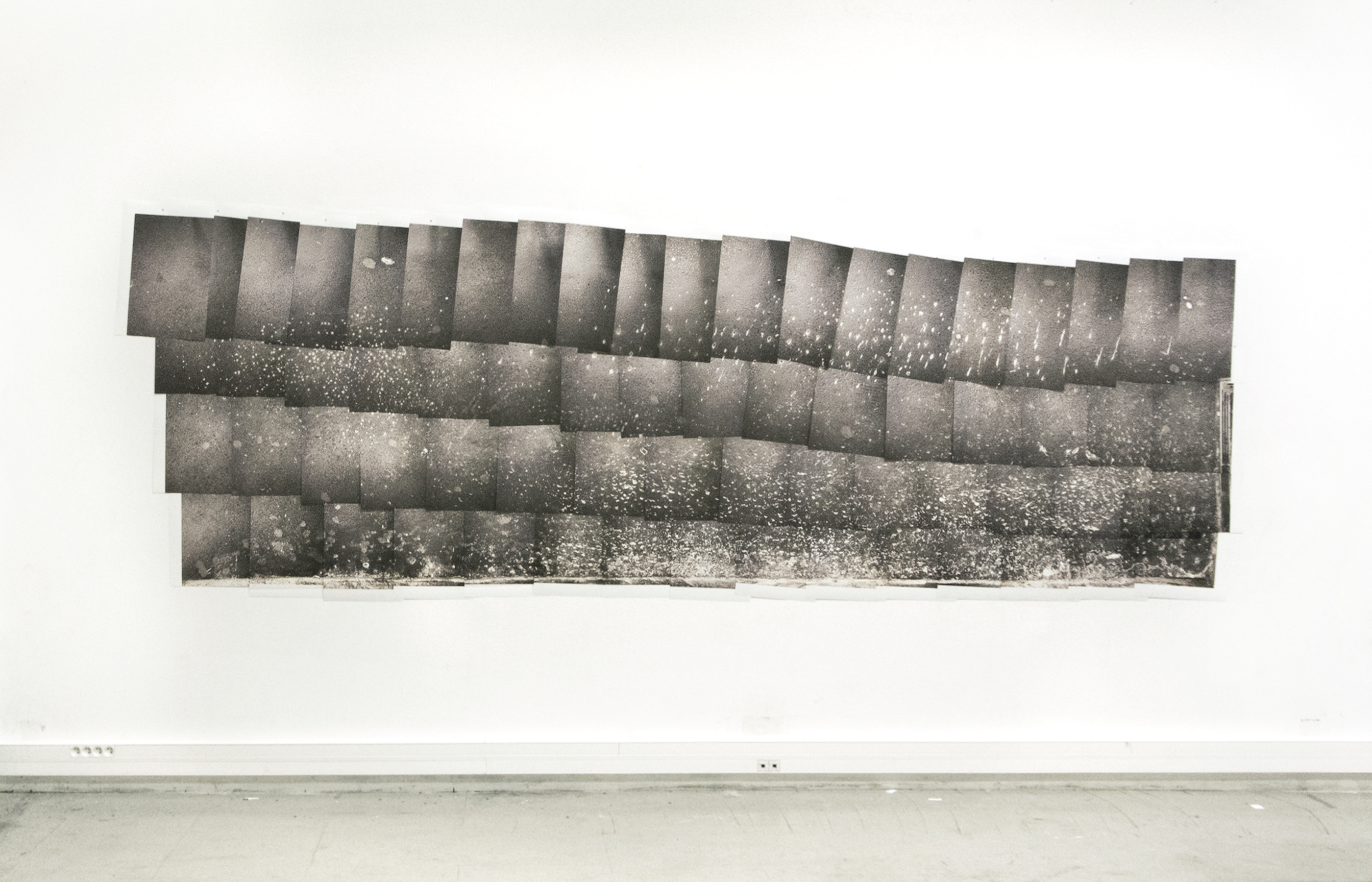
Persimfans, 2016 Photo documentation of marks, left by musical instruments and furniture of musicians on the floor of parisian metro corridors. UV print on paper, magnets, 440 x 130 cm.
Read more:
